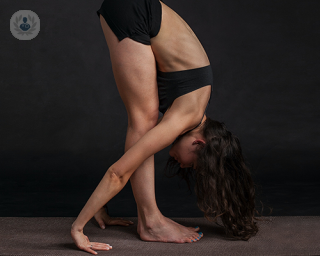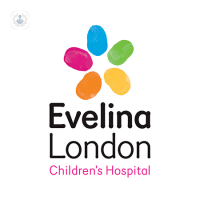What is joint hypermobility?
Joint hypermobility, also called hypermobility or Ehlers-Danlos syndrome is a hereditary disorder that occurs when a person has greater flexibility in joints, tendons, muscles and cartilage.
What are the symptoms?
This disorder can produce symptoms such as the following:
- Backaches and scoliosis
- Pain in muscles and joints, such as the knees, fingers, hips and elbows
- Muscle stiffness and spasms
- Easy predisposition to bruising
- Dislocations
- Symptoms outside the joints, such as varicose veins, hernias or stretchy skin
Why does hypermobility occur?
The exact cause of joint hypermobility is unknown, however, it has been confirmed that genetics play a major role. It is thought that a genetic mutation in the collagen fibres that affect the elasticity of tendons, ligaments, the skin and blood vessels causes the condition. Hypermobile joints are often referred to as loose joints and those with the condition are referred to as being “double jointed”.
Can it be prevented?
As the disorder is genetic in nature, it cannot be prevented, but complications can be avoided. Exaggerated flexion of the wrists or joints in the fingers should be avoided, that is, the fingers and the wrists shouldn’t be overextended or cracked. High-impact exercises should also be avoided.
What is the treatment?
Currently, there is no specific cure, but the effects can be mitigated with drugs (analgesics and non-steroidal anti-inflammatory drugs) and low-impact exercises, such as yoga or swimming. Improving muscle strength to protect the joints is vital, so your doctor may recommend occupational therapy or physiotherapy sessions to help with symptoms. You can also take home measures to reduce pain and stiffness by keeping joints warm, such as having warm baths and using deep heat creams.
03-11-2015 02-11-2023Hiperlaxitud articular
What is joint hypermobility?
Joint hypermobility, also called hypermobility or Ehlers-Danlos syndrome is a hereditary disorder that occurs when a person has greater flexibility in joints, tendons, muscles and cartilage.
What are the symptoms?
This disorder can produce symptoms such as the following:
- Backaches and scoliosis
- Pain in muscles and joints, such as the knees, fingers, hips and elbows
- Muscle stiffness and spasms
- Easy predisposition to bruising
- Dislocations
- Symptoms outside the joints, such as varicose veins, hernias or stretchy skin
Why does hypermobility occur?
The exact cause of joint hypermobility is unknown, however, it has been confirmed that genetics play a major role. It is thought that a genetic mutation in the collagen fibres that affect the elasticity of tendons, ligaments, the skin and blood vessels causes the condition. Hypermobile joints are often referred to as loose joints and those with the condition are referred to as being “double jointed”.
Can it be prevented?
As the disorder is genetic in nature, it cannot be prevented, but complications can be avoided. Exaggerated flexion of the wrists or joints in the fingers should be avoided, that is, the fingers and the wrists shouldn’t be overextended or cracked. High-impact exercises should also be avoided.
What is the treatment?
Currently, there is no specific cure, but the effects can be mitigated with drugs (analgesics and non-steroidal anti-inflammatory drugs) and low-impact exercises, such as yoga or swimming. Improving muscle strength to protect the joints is vital, so your doctor may recommend occupational therapy or physiotherapy sessions to help with symptoms. You can also take home measures to reduce pain and stiffness by keeping joints warm, such as having warm baths and using deep heat creams.


How normal is hypermobility (double-jointed) and what pain can it cause?
Por Dr Anthony Hammond
2024-11-21
Joint hypermobility is a normal phenomenon but for some, it can lead to pain. Dr Anthony Hammon shares his expertise. Learn from him about what exactly hypermobility is, causes, how it's treated and more. Ver más


All about osteogenesis imperfecta in children
Por Mr Gregory Firth
2024-11-15
Osteogenesis imperfecta (OI), or brittle bone disease, is a genetic disorder in children that causes fragile bones, making them susceptible to fractures with minimal trauma. Ver más
Doctores expertos en Hiperlaxitud articular
-
Dr Clarissa Pilkington
ReumatologíaExperto en:
- Artritis juvenil
- Lupus
- Dermatomiositis
- Hiperlaxitud articular
- Tratamiento del dolor
- Reumatología pediátrica
-
Professor Roger Wolman
ReumatologíaExperto en:
- Osteoporosis
- Artrosis
- Dolor de espalda
- Hiperlaxitud articular
- Artritis inflamatoria
- Medicina del deporte
-
Dr Stephanie Kaye-Barrett
ReumatologíaExperto en:
- Osteoporosis
- Gota
- Artritis
- Fibromialgia
- Artritis reumatoide
- Hiperlaxitud articular
-
Dr Eileen Baildam
ReumatologíaExperto en:
- Artritis juvenil
- Esclerodermia (Systemic sclerosis)
- Lupus
- Hiperlaxitud articular
- Fatiga crónica
- Dolor crónico
-
Dr Vinay Shivamurthy
ReumatologíaExperto en:
- Artritis
- Hiperlaxitud articular
- Fever
- Lupus
- Reumatología pediátrica
- Dolor crónico
- Ver todos

The Portland Hospital - part of HCA Healthcare
The Portland Hospital - part of HCA Healthcare
205 - 209 Great Portland St. W1W 5AH
No existe teléfono en el centro.
Si haces uso de este teléfono facilitado por TOP DOCTORS nos autorizas al tratamiento de tu teléfono para fines estadísticos y comerciales. Para más información, lee nuestra Política de Privacidad
Top Doctors

Evelina London Children's Hospital Private Healthcare
Evelina London Children's Hospital Private Healthcare
Floor 1 St Thomas' Hospital, Westminster Bridge Road, London. SE1 7EH
No existe teléfono en el centro.
Si haces uso de este teléfono facilitado por TOP DOCTORS nos autorizas al tratamiento de tu teléfono para fines estadísticos y comerciales. Para más información, lee nuestra Política de Privacidad
Top Doctors

Sussex Premier Health Eastbourne
Sussex Premier Health Eastbourne
Eastbourne District General Hospital, Kings Drive, Eastbourne, East Sussex
No existe teléfono en el centro.
Si haces uso de este teléfono facilitado por TOP DOCTORS nos autorizas al tratamiento de tu teléfono para fines estadísticos y comerciales. Para más información, lee nuestra Política de Privacidad
Top Doctors
-
The Portland Hospital - part of HCA Healthcare
205 - 209 Great Portland St. W1W 5AH, Central LondonExperto en:
- Cirugía neurológica espinal
- Cirugía ortopédica espinal
- Cuidado de maternidad
- El embarazo
- Escoliosis
- Fecundación in vitro (FIV)
-
Evelina London Children's Hospital Private Healthcare
Floor 1 St Thomas' Hospital, Westminster Bridge Road, London. SE1 7EH, SE1 South Bank LondonExperto en:
- Dermatología pediátrica
- Desarrollo infantil
- Nutrición infantil
- Pediatría
- Pediatría preventiva
- Vigilancia de la salud infantil
-
Sussex Premier Health Eastbourne
Eastbourne District General Hospital, Kings Drive, Eastbourne, East Sussex, EastbourneExperto en:
- Cataratas
- Cirugía de párpado
- Cirugía de preservación articular
- La salud de la mujer
- Urología
- Ver todos







